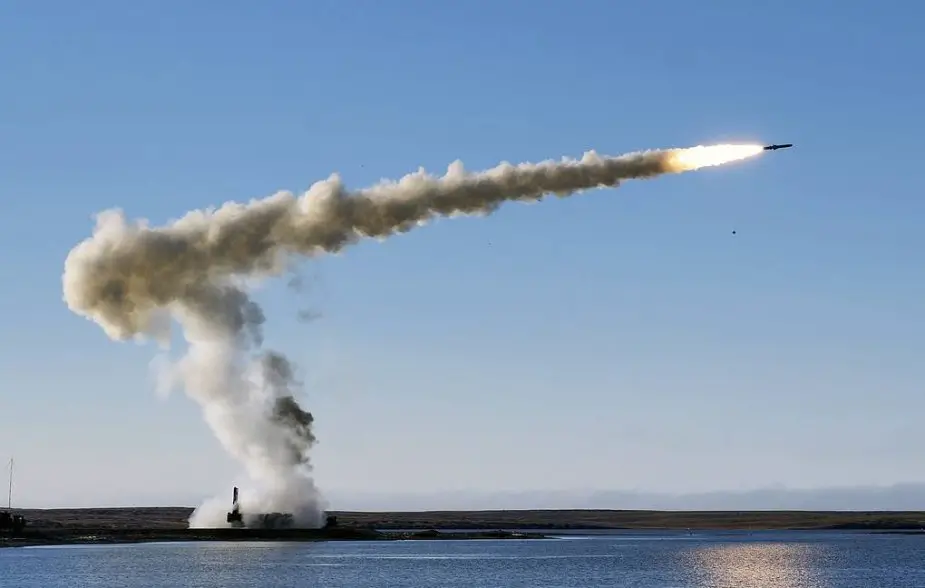Breaking news
Russian nuclear powered subs launch missiles during Arctic expedition.
According to information published by Tass on September 19, 2022, the Pacific Fleet’s nuclear-powered submarines Omsk (NATO reporting name: Oscar II) and Novosibirsk (Severodvinsk-class), a Bastion (SSC-5 Stooge) coastal missile system have launched Granit (SS-N-19 Shipwreck) and Onyx (SS-N-26 Strobile) cruise missiles against a complex seaborne target during an exercise.
Follow Navy Recognition on Google News at this link
 Russian K-300P Bastion-P mobile coastal defence missile system (Picture source: Tass)
Russian K-300P Bastion-P mobile coastal defence missile system (Picture source: Tass)
According to the press office, the missile launch was performed as part of the comprehensive Arctic expedition Umka 2022 and the submarines were in the surface position at that moment.
The Bastion coastal missile system launched an Onyx cruise missile from the coast of the Chukotka Peninsula. The missile hit the seaborne target at a distance of 300 km (186 mi).
The Pacific Fleet’s forces were controlled by Navy Commander Admiral Nikolai Yevmenov from the command ship Marshal Krylov.
Umka 2022 expedition
The comprehensive Arctic expedition Umka 2022 is being carried out to implement the provisions of Russia’s Naval Doctrine signed by President Vladimir Putin at the end of July.
The expedition involves the Main Command of the Navy, Pacific Fleet forces, the Russian Geographical Society, defense enterprises, and research organizations.
In order to check the ability and readiness to defend the Russian Arctic by military methods, drills that involved naval forces, naval aircraft and coastal troops were conducted during the expedition.
About the Bastion coastal missile system
The K-300P Bastion-P is a Russian mobile coastal defence missile system. The system was developed together with the Belarusian company Tekhnosoyuzproekt.
The main role of the Bastion-P is to engage surface ships including carrier battle groups, convoys, and landing craft.
A typical battery is composed of 1-2 command and control vehicles based on the Kamaz 43101 6×6 truck, one support vehicle, four launcher vehicles based on the MZKT-7930 8×8 chassis each operated by a 3-man crew and holding two missiles, and four loader vehicles; launcher vehicles can be located up to 25 km (16 mi) away from the C2 vehicles.
Upon halting, missiles can be readied for firing within five minutes, and both fired in 2-5 second intervals. The mobile launcher can remain on active standby over a period of 3–5 days, or up to 30 days when accompanied by a combat duty support vehicle.
The missile used by the Bastion-P is the P-800 Oniks, a supersonic anti-ship missile with a 200–250 kg (440–550 lb) warhead. They are fired vertically from the launchers using a solid-fuel rocket booster for initial acceleration, then use a liquid-fuel ramjet for sustained cruising at Mach 2.5.
The Oniks/Yakhont's maximum range varies at 120–300 km (75–186 mi; 65–162 nmi) using a low-low or hi-low flight trajectory respectively.




























